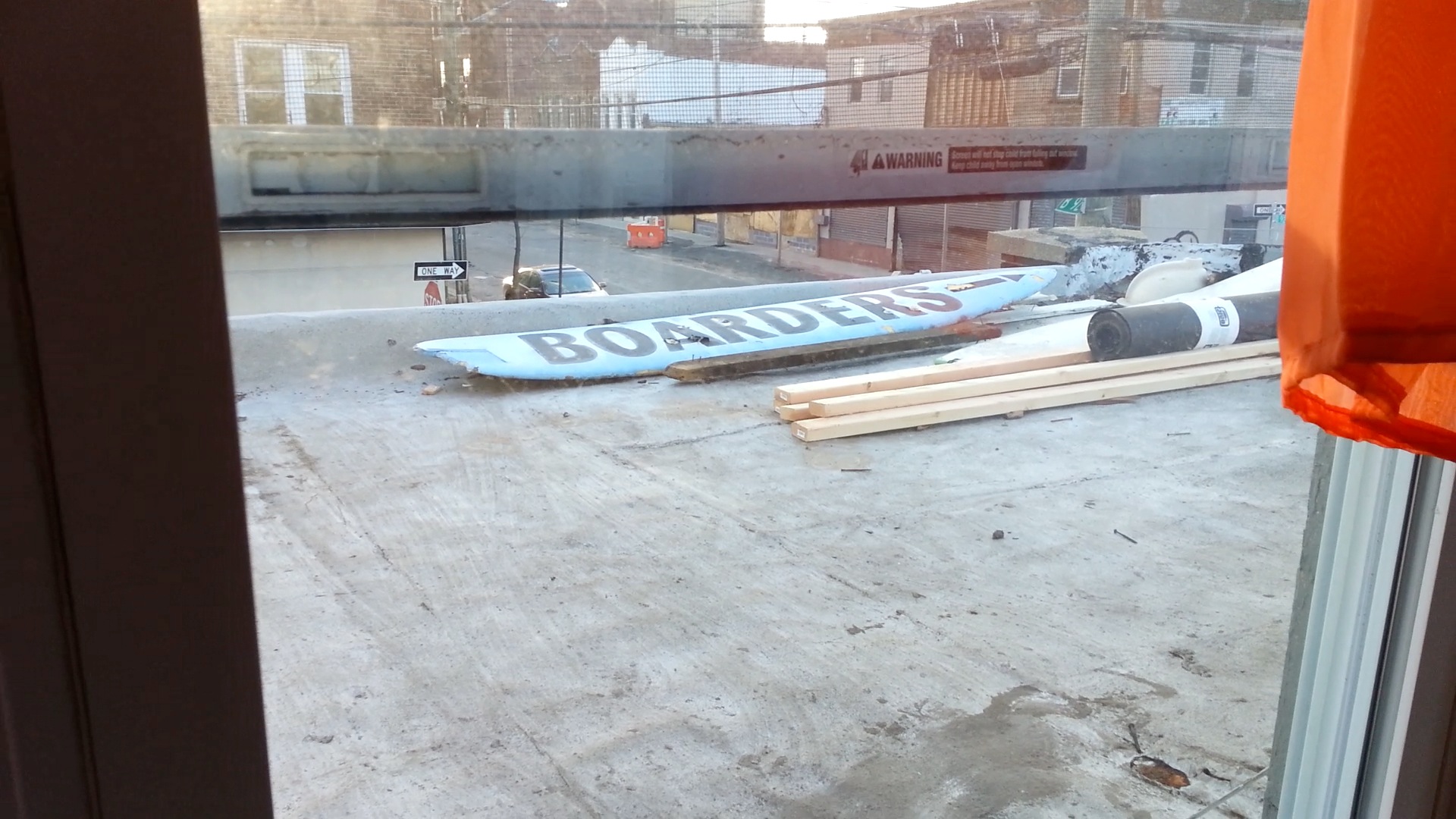
Some surfers are carrying more than their boards to the Rockaways – they’re bringing solar power to help strengthen the storm-battered peninsula against the sea.
“The first line of defense for the city is Rockaway Beach,” said Walter Meyer of Power Rockaways Resilience, a nonprofit group that formed after Sandy to install solar panels for free in the Queens community.
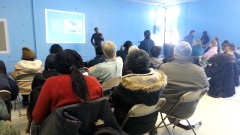
The group, started by surfers with strong connections to the Rockaways, led a solar education workshop hosted by the Rockaway Waterfront Alliance in February. As the Rockaways rebuild, solar energy advocates are floating a vision of using the sun to power what the storm nearly destroyed.
One of the dozens of residents in attendance asked where in a house or building would a solar battery go. When presenter David Gibbs said the battery usually goes in the basement, the crowd gasped, remembering the flooding Sandy caused in late October. But he added it could just as easily go in the attic or elsewhere.
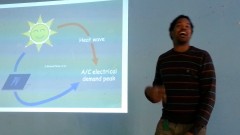 “You have to rethink how you live. You have to rethink how you build,” Gibbs said.
“You have to rethink how you live. You have to rethink how you build,” Gibbs said.
Longtime Rockaway residents Jerry and Maureen Walsh left the meeting enthusiastic about introducing solar power to their seaside community. “Rockaway could be a pilot (program),” Jerry Walsh said.
The Resilience started as a fundraising campaign to provide solar energy to relief efforts after the storm. Several groups offered solar expertise during the crisis, setting up temporary panels on trailers to provide lighting and charge small appliances. But it was surfers, with a unique bond to the peninsula, who set out to establish a permanent mission there.
In the days after the storm, the Rockaway Surf Club converted from a cultural hub into a relief center. Meyer and Jennifer Bolstad – his wife and colleague in landscape architecture – came from Brooklyn to help.
“It was more of a personal thing,” said Meyer, who lived in the Rockaways on and off for the past decade and visited nearly every weekend.
Meyer asked if Gibbs could bring solar stations to the peninsula. Gibbs soon arrived with solar batteries and panels that were just “lying around,” and two solar lanterns originally earmarked for Africa. People lined up to charge phones at solar stations on Beach 90th Street.
The Power Rockaways Resilience, which bills itself as “planners and engineers who surf Rockaway Reach,” raised $30,000 on Indiegogo.com. A permanent solar panel was attached atop the surf club within a month after Sandy hit. Group members connected the panel to the circuit box for just enough power for some lights and some outlets. “It operated as if the building was up and running,” Jennifer Bolstad said. “It was pretty much their only lifeline.”
About a dozen relief sites in the area used solar power, and all the solar organizations united as Solar Sandy. By March, solar use was down 80 percent compared to the peak need period in the days after the storm, Meyer said.
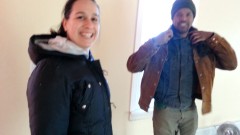
Lena Roca, who runs Yoga on the Rocks, is among the first beneficiaries of the campaign to bring solar power to the Rockaways. She opened her Beach 92nd Street studio two weeks before the storm ravaged her business, sweeping her backup gas generator out to sea. “The first thing I thought to do was to go to the surf club because that’s like a community organization already,” said Roca, a surfer.
Even without electricity, she reopened her studio as a relaxation center where people could get massages and drink tea. Within two weeks, Power Rockaways Resilience set up the yoga studio with solar panels on trucks outside. The panels have been returned to lenders since.
But before the studio goes back on the grid, solar power will light the studio. Roca will share a one-kilowatt off-grid photovoltaic solar panel system, including a storage battery with a neighboring surf shop. It will charge lights and heat, enough for yoga.
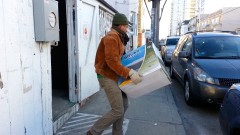
Such a set-up costs about $3,500, half the price of a typical on-grid 1kw system. Over time, the system at Yoga on the Rocks might expand into a more elaborate 4kw bimodal system. Gibbs calls bimodal the “holy grail” because it could work alongside grid-power and keep running when a storm disrupts the grid. Some Rockaway residents who already had solar installed before Sandy lost power anyway because they were on grid-tied systems without backup.
The Resilience has a unique assortment of places lined up for installations in the coming weeks and months. The group is putting solar up on a temporary geodesic dome at PS1 MOMA; an old firehouse used as a community center by the Rockaway Waterfront Alliance; and the Veggie Island restaurant where part of Occupy Sandy’s operations took place.
The only condition for donated solar is that panels have to stay in the Rockaways, said Meyer. “The hierarchy started with relief places,” he said. “The next hierarchy was businesses and community centers.”
Looking down the road, the vision includes clusters expanding solar power to low-income housing, and then everyone else, he said.
After dropping off the solar equipment at Yoga on the Rocks, Gibbs said he was thinking of moving back to the Rockaways. Since he does solar projects around the world, it’s helpful to live near Kennedy Airport. The other reason is for surfing. He understands why others want to stay in the neighborhood.
“Down there they’ve never had a major storm like that,” he said. “Now, you’ve got to learn your lessons from it.”
Photos: Shannon Ayala
Index thumbnail photo: courtesy Power Rockaways Resilience
1 Comment
Comments are closed.